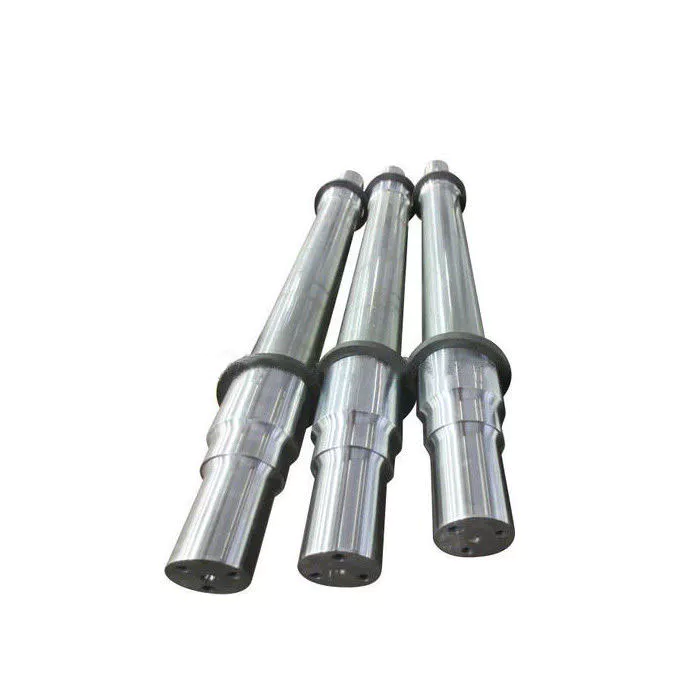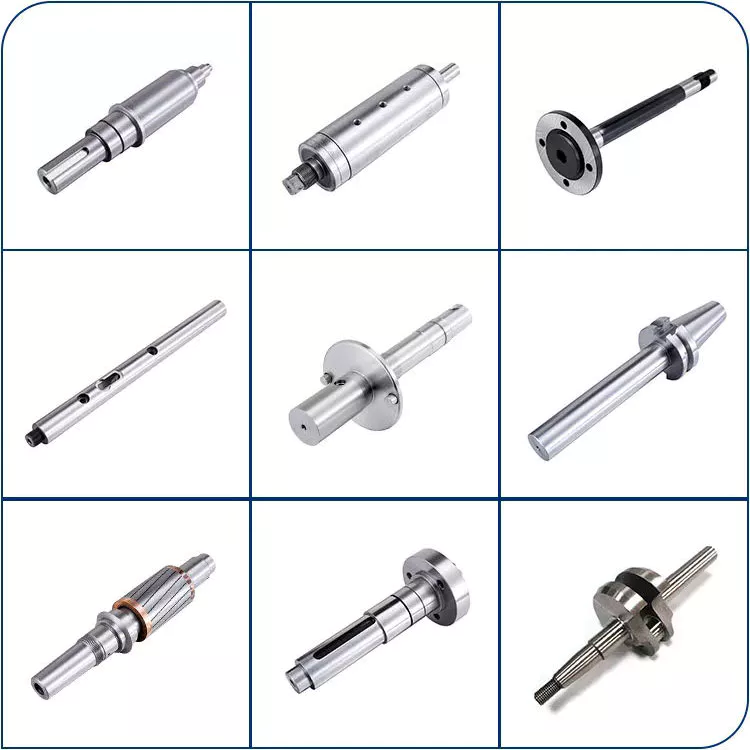Product Description
What is railway axle
Railway axles are generally used in railway vehicles and are mechanical parts that connect 2 train wheels.
Our Railway axle applications:
1. Our railway axle can be used in railway locomotives, trucks, passenger cars, and high-speed trains.
2. Our railway axle can meet the needs of high speed, high power, large diameter, heavy load, and different gauges.
3. Our railway axles can also be applied to axles for various urban rail vehicles.
In addition, I can also produce many types of engineering, industrial shafts and other products.
| Product Name | Railway Axles |
| Wide Material | KINGRAIL PARTS axles wide range of raw material steel support LZ50, JZ45,AAT Grade F, EA1N, EA1T, EA4T, IRS 16/95, SFA60A, and et |
| Axle Type | Drive axle with multiple seats, Locomotive axles, Non-driven freight wagon axle, Passenger coach axle. |
| Axle Diameter | Φ90mm~Φ280mm |
| Alxe Length | 1600mm~2650mm |
| Test | Chemical analysis, Metallographic, Mechnical analysis, Ultrasonic testing, Magnetic testing, Impact testing, Hardness testing, Surface quality and dimension report |
| Certifications | ISO9001,ISO14001, OHSAS18001, AAR, IRIS, TSI |
Production process of the railway axle:
1. Billet Steel Review 2. Cutting 3. Heating 4. Forging 5. Straightening 6. Heat Treatment 7. Sampling Test 8. Ultrasonic Inspection 9. Rough Machining 10. Semi-Finish Machining 11. Finish Machining 12. Granding 13.Magnetic Particle Testing 14. Packing
| Quality Test for Raiwlay Axle | |||
| Chemical Analysis | Metallographic | Mechanical Analysis | Ultrasonic Testing |
| Magnetic Testing | Impact Testing | Hardness Testing | Surface Quality |
| Diemension Checks(CMM) | Customers’ acceptance check or third party check | ||
Packing&Shipping
Package : axles are fixed by wood frame and steel bars in wooden cases
Wooden cases : export wooden cases with fumigation certifications
Why choose CZPT Parets Railway Axle
1. We can provide various finished and semi-finished railway axles for railway rolling stock 2. Our factory has produced railway axles for more than 30 years and is an axle production company designated by the Chinese Ministry of Railways. 3. We have passed DB certification, AAR certification, and obtained Alstom’s B-level supplier qualification. We can mass produce axles that meet EN13261, AAR M101, UIC811 and Indian IRS R16 standards. 4. The axles we produce have been exported to Iran, Pakistan, Iraq, Egypt, Germany, India, Brazil, Chile, Myanmar, and other countries.
If you have any questions, pls feel free to contact us as below:
http:// /showroom/5fd55aec447165c4
MaHangZhou Ruika Metal Products Technology Co., Ltd.
Standard Length Splined Shafts
Standard Length Splined Shafts are made from Mild Steel and are perfect for most repair jobs, custom machinery building, and many other applications. All stock splined shafts are 2-3/4 inches in length, and full splines are available in any length, with additional materials and working lengths available upon request and quotation. CZPT Manufacturing Company is proud to offer these standard length shafts.
Disc brake mounting interfaces that are splined
There are 2 common disc brake mounting interfaces, splined and center lock. Disc brakes with splined interfaces are more common. They are usually easier to install. The center lock system requires a tool to remove the locking ring on the disc hub. Six-bolt rotors are easier to install and require only 6 bolts. The center lock system is commonly used with performance road bikes.
Post mount disc brakes require a post mount adapter, while flat mount disc brakes do not. Post mount adapters are more common and are used for carbon mountain bikes, while flat mount interfaces are becoming the norm on road and gravel bikes. All disc brake adapters are adjustable for rotor size, though. Road bikes usually use 160mm rotors while mountain bikes use rotors that are 180mm or 200mm.
Disc brake mounting interfaces that are helical splined
A helical splined disc brake mounting interface is designed with a splined connection between the hub and brake disc. This splined connection allows for a relatively large amount of radial and rotational displacement between the disc and hub. A loosely splined interface can cause a rattling noise due to the movement of the disc in relation to the hub.
The splines on the brake disc and hub are connected via an air gap. The air gap helps reduce heat conduction from the brake disc to the hub. The present invention addresses problems of noise, heat, and retraction of brake discs at the release of the brake. It also addresses issues with skewing and dragging. If you’re unsure whether this type of mounting interface is right for you, consult your mechanic.
Disc brake mounting interfaces that are helix-splined may be used in conjunction with other components of a wheel. They are particularly useful in disc brake mounting interfaces for hub-to-hub assemblies. The spacer elements, which are preferably located circumferentially, provide substantially the same function no matter how the brake disc rotates. Preferably, 3 spacer elements are located around the brake disc. Each of these spacer elements has equal clearance between the splines of the brake disc and the hub.
Spacer elements 6 include a helical spring portion 6.1 and extensions in tangential directions that terminate in hooks 6.4. These hooks abut against the brake disc 1 in both directions. The helical spring portion 5.1 and 6.1 have stiffness enough to absorb radial impacts. The spacer elements are arranged around the circumference of the intermeshing zone.
A helical splined disc mount includes a stabilizing element formed as a helical spring. The helical spring extends to the disc’s splines and teeth. The ends of the extension extend in opposite directions, while brackets at each end engage with the disc’s splines and teeth. This stabilizing element is positioned axially over the disc’s width.
Helical splined disc brake mounting interfaces are popular in bicycles and road bicycles. They’re a reliable, durable way to mount your brakes. Splines are widely used in aerospace, and have a higher fatigue life and reliability. The interfaces between the splined disc brake and BB spindle are made from aluminum and acetate.
As the splined hub mounts the disc in a helical fashion, the spring wire and disc 2 will be positioned in close contact. As the spring wire contacts the disc, it creates friction forces that are evenly distributed throughout the disc. This allows for a wide range of axial motion. Disc brake mounting interfaces that are helical splined have higher strength and stiffness than their counterparts.
Disc brake mounting interfaces that are helically splined can have a wide range of splined surfaces. The splined surfaces are the most common type of disc brake mounting interfaces. They are typically made of stainless steel or aluminum and can be used for a variety of applications. However, a splined disc mount will not support a disc with an oversized brake caliper.

